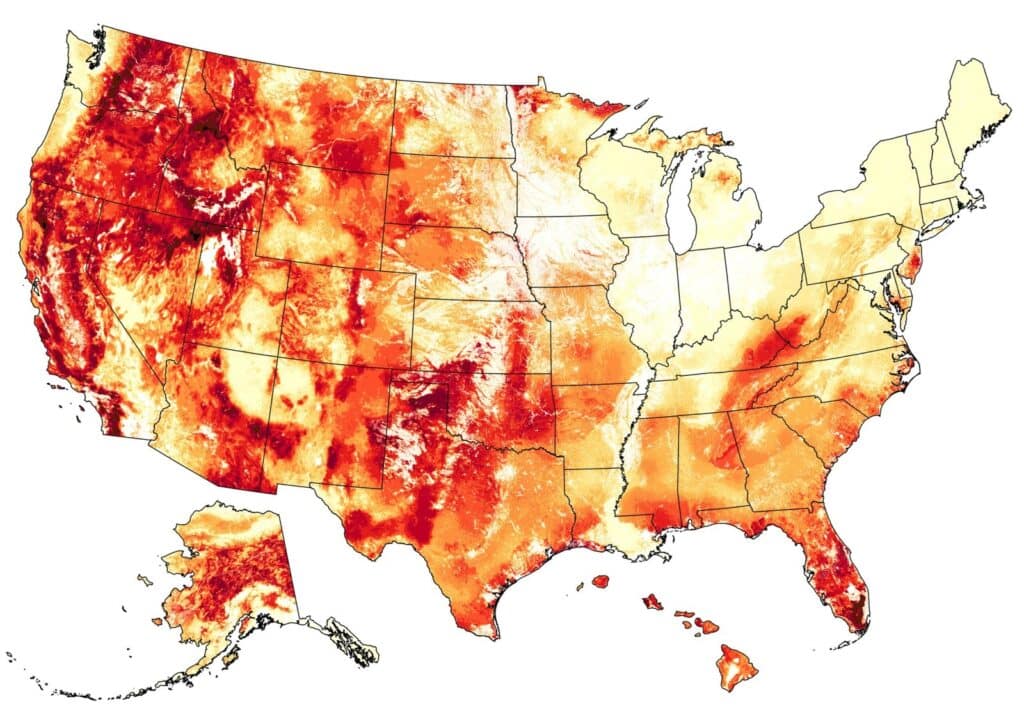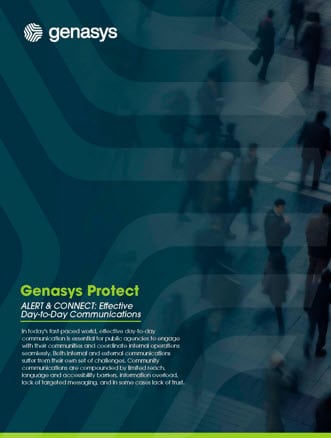By Steve Sickler, VP of Field Operations at Genasys
Once thought to be safe from natural disasters, inland regions are now experiencing an alarming increase in intensifying climate disasters from droughts, hurricanes, wildfires, and flooding.
The shift has created a pressing need for effective crisis and evacuation management solutions. Inland locations are now much more vulnerable and that is impacting strategy development and resource deployment for emergency management as these communities prepare for the impact of these extreme weather events.
The Growing Threat of Inland Weather-Related Disasters
Traditionally, weather-related disaster risks were more localized to coastal and mountainous regions, but climate change has broadened these threats. Inland areas, especially those with dry forests or wetlands, are now increasingly vulnerable to these disasters. What was once thought of as a wildfire problem in California or a hurricane problem along the Florida Coastline is now impacting major swaths of the United States.
In the last few months alone, wildfires have erupted in New York, Connecticut, North Carolina, New Jersey, and other east coast locations not used to seasonal wildfire outbreaks. Devastating inland flooding from atmospheric rivers and hurricanes is threatening communities far outside of modeled 100-year floodplains, including the record-smashing floods from Hurricane Helene.
To demonstrate, the two maps below are from the National Interagency Fire Center and illustrate (1) the Wildland Fire Outlook for November 2024, which is concentrated in the South and Mid-Atlantic regions (not normally thought of as at-risk), and (2) the Current Wildfire Map as of November 11, 2024.


In fact, the United States Department of Agriculture has released a map on wildfire risk across the United States. What’s commonly viewed as a mountain-west concern is clearly a more national concern warranting preparedness coast-to-coast.

Rising temperatures, prolonged droughts, and sudden rainstorms combine to create an environment ripe for wildfires and frequent, severe inland flooding. In the United States alone, landlocked states such as Idaho, Colorado, Utah, and Nevada have seen dramatic surges in wildfires and floods over recent years, and in the Fall of 2024, back-to-back Hurricanes Helene and Milton caused unprecedented flooding and damage from Florida through Western North Carolina and Eastern Tennessee.
Understanding the Fire-Flood Cycle in Inland Areas
One of the most dangerous patterns emerging in inland locations is the fire-flood cycle, where an increase in wildfires directly leads to heightened flood risk. After a wildfire, the soil in the affected area becomes water-repellent and loses its capacity to absorb water. As a result, even light rainfall can lead to flash flooding and mudslides, which endanger the communities downstream of burn-scarred areas.
This interconnected risk requires that emergency management strategies account for extreme weather events from hurricanes, tornadoes, wildfires, and floods. Implementing an emergency alert system that can swiftly notify residents of imminent threats is crucial, as is educating the public on evacuation routes, especially in areas newly susceptible to flooding after fires. This combined response can save lives and minimize the extent of property damage.
Strengthening Public Warning Systems for Better Preparedness
With the rise in inland climate-related disasters, the need for reliable public warning systems has become evident. A robust emergency alert system is essential to ensuring that residents are aware of the impending risks, especially in regions that haven’t historically dealt with such events. Crisis management teams must work to install these systems and ensure they are efficient, far-reaching, and capable of covering even the most remote areas.
Investing in advanced alert technologies can dramatically improve crisis response times, allowing emergency services to focus on evacuation management and reducing harm. Public education campaigns, complemented by clear, actionable warnings, empower residents to act swiftly, often making the difference between life and death in a crisis.
Evacuation and Crisis Management Strategies
Managing crises related to increased wildfires and floods requires comprehensive evacuation planning. Inland communities, which may lack experience with frequent evacuations, need clear, well-practiced evacuation management strategies. Identifying zone-based evacuation routes and establishing shelters in areas least likely to be affected by fires or floods can significantly improve outcomes during emergencies.
Community engagement is essential to this process. Residents need to understand their local risks and the steps they must take if evacuation becomes necessary. Building strong communication networks between local government, emergency services, and the public creates a culture of preparedness that can lessen the impact of these disasters.
Building Climate-Resilient Infrastructure to Mitigate Impact
A proactive approach to disaster resilience is critical for inland communities facing increased wildfires and floods. Building infrastructure that withstands both extreme droughts and intense rainfall can reduce both fire and flood impacts. For example, creating firebreaks, strengthening riverbanks, and developing resilient road networks that support evacuation efforts are practical ways to manage the dual threats.
Green infrastructure, such as planting vegetation that can resist wildfires or absorb rainfall, offers another innovative way to enhance resilience. These measures reduce the frequency and severity of wildfires and floods and allow communities to bounce back faster from these climate disasters.
A Final Word
As inland locations become increasingly vulnerable to hurricanes, wildfires, and floods, the urgency of developing tailored crisis management and emergency alert systems cannot be overstated. From understanding the fire-flood cycle to strengthening public warnings, implementing evacuation plans, and investing in climate-resilient infrastructure, there are clear steps that communities can take to reduce their risk.
By fostering a proactive, informed approach, we can better prepare for the growing climate threats facing inland regions and ensure a safer future for all.
The increase in climate disasters for recently impacted inland locations underscores the importance of tailored crisis management plans. Local governments and communities that may be unaccustomed to dealing with these challenges are urged to develop resilient infrastructure, implement public warning systems, and foster community awareness of these evolving threats.
Contact Genasys to learn more about protective communications, from mass notification solutions to evacuation management software to long-range acoustic devices (LRADs) designed to reach long distances. We have a team of experts who understand what it means to be “Ready When It Matters.”















